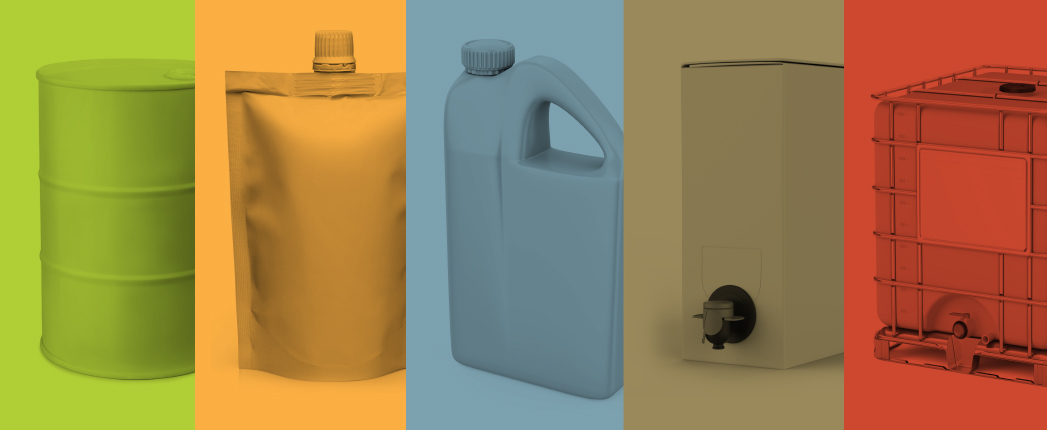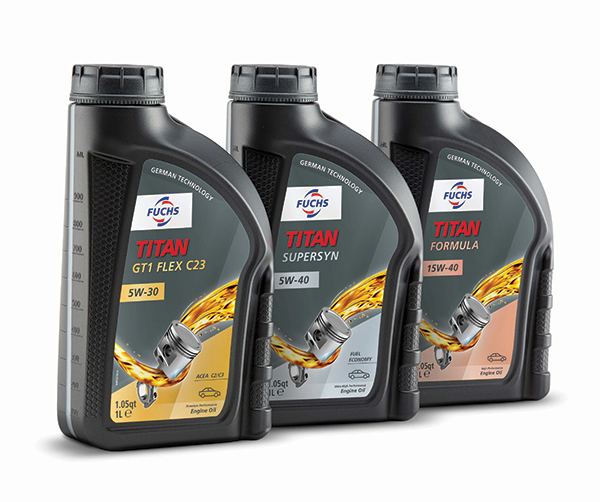
Lubricant packaging has necessarily evolved over the years as materials availability has wavered, costs have risen, different types of packaging components have become available and more functional designs have been developed. All of these elements are joined by an ever-increasing emphasis on sustainability that has permeated the lubricants industry. How exactly are these factors affecting lubricant packaging right now?
Materials Availability Wavers
Since the onslaught of the COVID-19 pandemic, supply chains in nearly every industry have been volatile at best. Even when lubricant producers have been able to obtain enough raw materials to blend their lubricants, many of them struggled to scrounge up enough drums, totes and other types of packaging in which to ship their products to their customers.
Steel drums have been particularly difficult to come by amid a worldwide shortage of steel sheet, said Paul Rankin, president of the Reusable Industrial Packaging Association, which is based in Annapolis, Maryland.
What are the reasons behind this shortage? Rankin cited the import policies put in place by the Trump Administration in 2018—as well as those continued by the current Biden Administration—as one viable reason for the steel scarcity, at least in the United States.
Although the tariffs were replaced by a quota system for steel imported from Europe late last year, at the time of writing steel supply remained too low for comfort. “What it boils down to is that at least a percentage of steel is either coming in slowly or not at all as a result of import quotas,” Rankin said. “And that will continue, at least for the foreseeable future.”
The lack of adequate steel supply has in turn raised the price of steel sheet.
What else has contributed to the steel sheet shortage in the United States? Rankin cited a rise in demand from other regions of the world as a major reason. “You have demand for steel in the last four to six months, at least, rising significantly in China and other Asian countries, and being at least steady—if not rising again—in Europe,” he said. “This puts pressure on the ability of any importer to obtain his or her quota from a given plant.”
The availability of parts that accompany steel drums is also scarce. “On a steel drum, there aren’t that many parts, but there are a couple,” Rankin said. “You have rings for open-head steel drums, which is a steel shortage issue. Ring manufacturers are having the same problem as steel drum manufacturers are having. They’re usually two separate entities. And then a significant percentage of gaskets are imported, so users of gaskets are facing the same kind of supply chain holdups that everybody else is facing. That puts extra pressure on the availability of containers.”
Steel drums and other lubricant packaging, like intermediate bulk containers, can be reconditioned and reused. However, this practice is not doing much to alleviate the shortage of steel sheet. “The reconditioners depend for their raw product, which is steel drums, on the new manufacturing industry,” Rankin said. “So to the extent that there is a reduction in the production levels of new steel drum manufacturers, there is a concurrent reduction in the availability of used steel drums for reconditioners to use. To the extent that new steel drum manufacturing is in decline, so too is the availability of used drums for reconditioning.”
What’s more, not all drums can be reconditioned. Some must be scrapped and recycled. “Then you add to that, of course, the likelihood that at least a percentage of all the drums that reconditioners collect cannot be reused for a variety of different reasons,” Rankin said. “They may have dents, they may have cracks or they may have leaks.”
Is the steel supply situation bound to improve in the near future? Rankin does not think so. “So you have got all that stuff sort of working against steel sheet import, which is the basis of steel drums, for the most part,” he said. “I don’t really see any changes in that for a while—for the foreseeable future, which is months. Nobody sees any light at the end of that particular tunnel. I think as a result of the quotas, pricing is going to continue to be high, availability is going to continue to be allocated and you will continue to have—at least to some extent—shortages based on that problem.”
What conditions would have to change for the materials availability issues to improve? “It’s hard to say,” Rankin said. “The only thing that is really going to make a big difference is if the import quotas are pulled, and that’s just not going to happen.”
Sustainability Rules
It is no secret that the quest for sustainability has been top of mind for many lubricants industry players. No exception to the rule, the Fuchs Group, which is based in Mannheim, Germany, recently designed a new type of small packaging for automotive lubricants that a November press release said is more “gentle on resources” than traditional packaging. The new packaging features new labels for better orientation, an ergonomic design for easier handling and tamper-resistant screw caps. Most notably, though, the “bottle material” of the new packaging is made from 30% recycled materials and is 100% recyclable.
Furthermore, the new bottle shape makes it possible to pour out even the smallest remaining volume of lubricant, allowing for complete emptying of the bottles, the company said.

“Our new small packs are not just intended to be more user-friendly but also contribute to avoiding waste, enable materials to be recycled and help to reduce carbon footprints,” said Markus Garb, vice president of sustainability with Fuchs. “Fuchs will continue to work toward making our packaging continuously more sustainable in the future, too.”
Fuchs has been on the path to carbon neutrality for more than a decade, closely following an “avoid, reduce, compensate” principle. Early last year, the company announced that all its subsidiaries around the globe had become carbon neutral, meaning that the company has achieved a balance between emitting carbon from its operations and compensating for those emissions via carbon offsetting projects.
Challenges of Lubricant Packaging Recycling
While it is difficult to recycle used lubricant packaging because of residual oil left behind after use, the industry has placed increasing emphasis on the practice in recent years. In March 2021, a recycling coalition was founded in the United States. The National Lubricant Container Recycling Coalition’s primary goal is to establish a program that reuses and recycles used lubricant containers. The coalition’s five founding members consist of finished lubricant blenders Castrol, Valvoline and Pennzoil-Quaker State as well as packaging companies Graham Packaging and Plastipak Packaging.
Research conducted in the early stages of the coalition’s existence points toward a difficult road ahead, even though the coalition estimates that about 4.5 million tons of lubricant containers are purchased in the U.S. each year. Leading the coalition in this arduous task is Tristan Steichen of ALO Advisors, an environmental consultancy based in Bradenton, Florida. He told Lubes’n’Greases in August that “not much, if any” of the lubricant containers sold in the U.S. are currently being recycled.
Furthermore, on both a state and a federal level, there are no programs in place to handle these used lubricant containers. Even the more environment-focused states—like California, which does have a detailed waste oil collection program in place—instruct consumers to simply throw away their empty lubricant containers.
|
A single 6-gallon bag-in-box can replace as many as 24 1-liter bottles of motor oil.
|
Granted that a reasonable number of containers can be collected for recycling, there are currently two recycling processes that can potentially be used. Chemical recycling is better suited for containers that have residual oil in them, because it converts the used plastic into a monomer. On the other hand, mechanical recycling differs from chemical recycling in that the oil must be cleaned off the plastic to an acceptable level. In this process, materials are melted down, run through an extruder and mixed with other plastics.
Because it is difficult to recycle traditional plastic oil bottles, packaging companies and lubricant blenders alike have sought to develop more easily recyclable packaging options in recent years. One example is a bag-in-box system, which consists of a lubricant-filled plastic bag housed inside a cardboard box. For every liter of motor oil packaged in a 10-liter bag-in-box instead of a plastic polyethylene terephthalate bottle of the same size, 38 kilograms of carbon dioxide can be saved, according to Liquibox, a producer of sustainable packaging solutions for the automotive, food and other industries. What’s more, the Richmond, Virginia-based company’s website says that a single 6-gallon bag-in-box can replace as many as 24 1-liter bottles of motor oil, cutting significantly the amount of material used for packaging.
Sydney Moore is managing editor of Lubes’n’Greases magazine. Contact her at Sydney@LubesnGreases.com